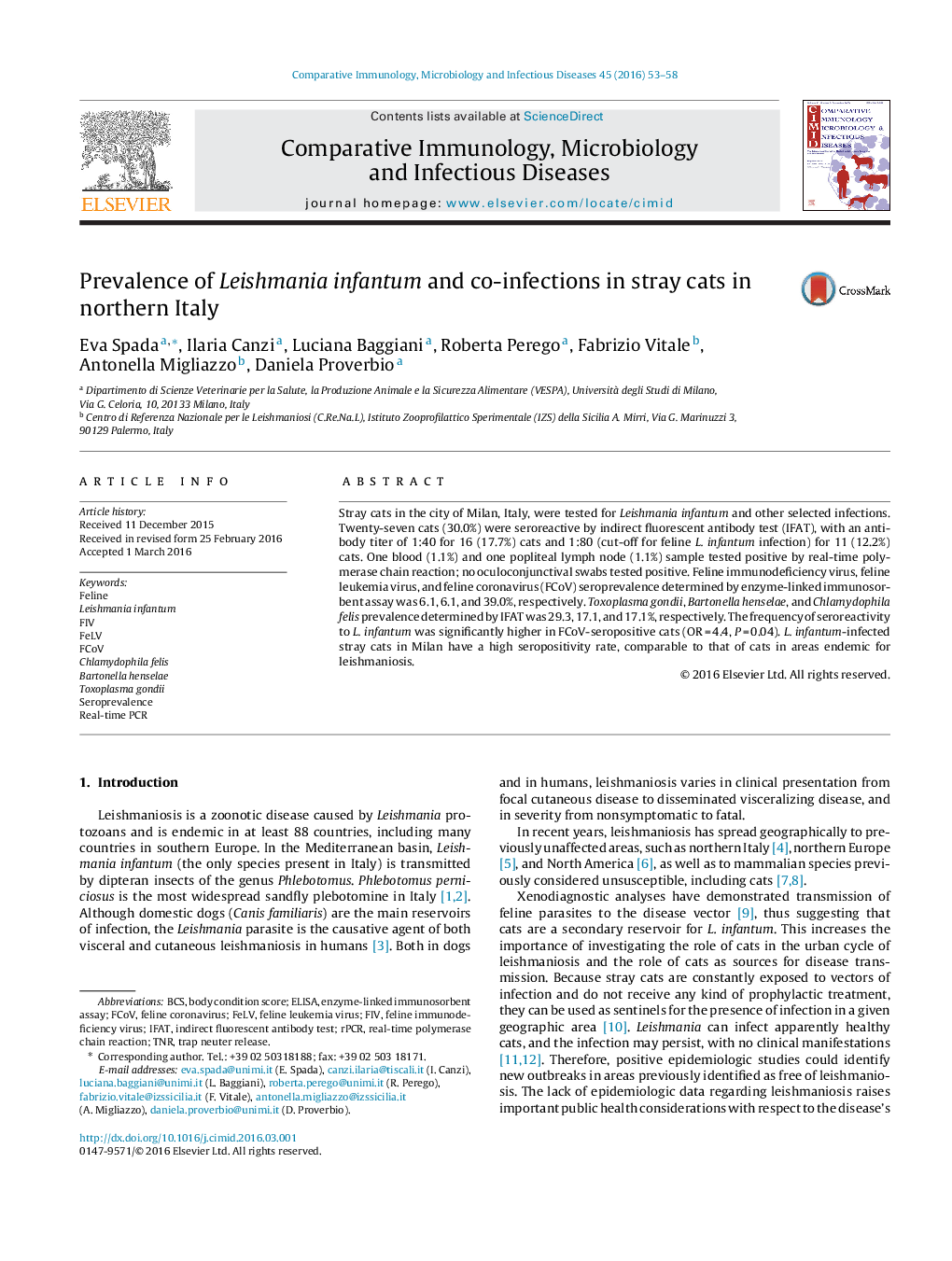| Article ID | Journal | Published Year | Pages | File Type |
|---|---|---|---|---|
| 2428144 | Comparative Immunology, Microbiology and Infectious Diseases | 2016 | 6 Pages |
•A study of stray cats in Italy expands epidemiologic data regarding leishmaniosis.•Leishmania infantum IFAT seroreactivity was found in 12.2% of cats at 1:80 titer.•This seropositivity rate is comparable to that in areas endemic for leishmaniosis.•Leishmania co-infection with FIV, FeLV, FCoV was 0.0%, 2.4%, 8.5%, respectively.•Co-infection with T. gondii, B. henselae, C. felis was 3.7%, 2.4%, 3.7%, respectively.
Stray cats in the city of Milan, Italy, were tested for Leishmania infantum and other selected infections. Twenty-seven cats (30.0%) were seroreactive by indirect fluorescent antibody test (IFAT), with an antibody titer of 1:40 for 16 (17.7%) cats and 1:80 (cut-off for feline L. infantum infection) for 11 (12.2%) cats. One blood (1.1%) and one popliteal lymph node (1.1%) sample tested positive by real-time polymerase chain reaction; no oculoconjunctival swabs tested positive. Feline immunodeficiency virus, feline leukemia virus, and feline coronavirus (FCoV) seroprevalence determined by enzyme-linked immunosorbent assay was 6.1, 6.1, and 39.0%, respectively. Toxoplasma gondii, Bartonella henselae, and Chlamydophila felis prevalence determined by IFAT was 29.3, 17.1, and 17.1%, respectively. The frequency of seroreactivity to L. infantum was significantly higher in FCoV-seropositive cats (OR = 4.4, P = 0.04). L. infantum-infected stray cats in Milan have a high seropositivity rate, comparable to that of cats in areas endemic for leishmaniosis.
